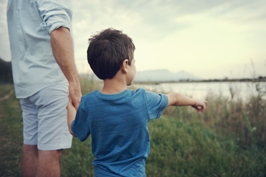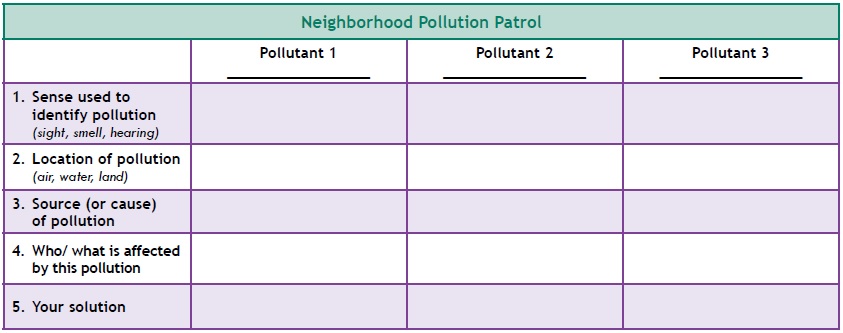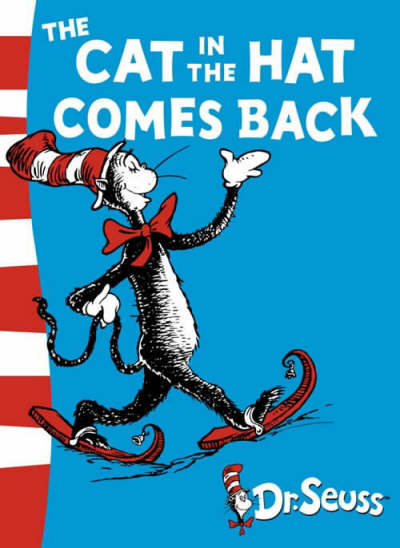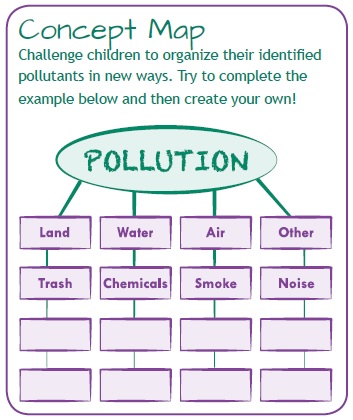 Here is a way for children to take a closer look at pollution: what it is, what its sources are, and what people can do to reduce it.
Here is a way for children to take a closer look at pollution: what it is, what its sources are, and what people can do to reduce it.
Background
Human-generated chemicals, trash, noise, and heat are all pollutants, but so is ash spewing from an erupting volcano or smoke spreading from a forest fire.
Pollution is any contamination of air, water, or land that affects the balance of the environment.
Doing the Activity
Take children on a guided walk of your neighborhood to identify the sights, sounds, and smells of pollution that may exist around you.
Before stepping outside, prepare children by reviewing the “Neighborhood Pollution Patrol” chart below, and take it outdoors to assist with record keeping.

Ask questions
Ask prompting questions to help children complete the chart. The question numbers correspond to the numbered cells on the chart above:
- Do you see, hear, or smell any signs of pollution? What is it?
- Can you find examples of pollution on land, in the air, and in the water? Where?
- Can you explain the source or cause of the pollution you have identified?
- Who or what is affected by this pollution?
- What might you do to help eliminate or reduce this pollution?
Resources

For younger children, consider reading Dr. Seuss’s The Cat in the Hat Comes Back
(ISBN 0394800028).
This story can be used to teach about people’s attitude toward pollution.
- What represents pollution in this story?
- Where does it come from?
- How did the cat try to solve the problem?
- Is there a happy ending?
- Does this story remind you of any pollution you have seen or know about?
Download this Activity
Descarga la actividad en español: En busca de la polución
Get the Full Activity
This family activity is adapted from Project Learning Tree’s PreK-8 Environmental Education Activity Guide which can be obtained through an in-person professional development workshop or online course.
All PLT activities are copyright protected. Please remember to reproduce responsibly.
Click here for our Content Reprint and Adaptation Policy.



